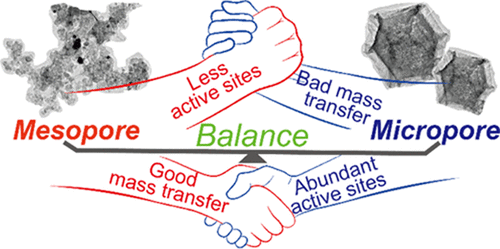当前位置:
X-MOL 学术
›
ACS Appl. Mater. Interfaces
›
论文详情
Our official English website, www.x-mol.net, welcomes your
feedback! (Note: you will need to create a separate account there.)
Mass Transfer in a Co/N/C Catalyst Layer for the Anion Exchange Membrane Fuel Cell.
ACS Applied Materials & Interfaces ( IF 8.3 ) Pub Date : 2020-06-26 , DOI: 10.1021/acsami.0c08829 Weikang Zhu 1 , Yabiao Pei 1 , Yang Liu 1 , Junfeng Zhang 1 , Yanzhou Qin 1 , Yan Yin 1 , Michael D Guiver 1
ACS Applied Materials & Interfaces ( IF 8.3 ) Pub Date : 2020-06-26 , DOI: 10.1021/acsami.0c08829 Weikang Zhu 1 , Yabiao Pei 1 , Yang Liu 1 , Junfeng Zhang 1 , Yanzhou Qin 1 , Yan Yin 1 , Michael D Guiver 1
Affiliation

|
Developing highly efficient non-noble metal catalysts for the cathode of fuel cells is an urgent requirement for reducing the cost. Although the intrinsic activity of non-noble metal materials has been greatly improved, the fuel cell performance is also determined by the mass transfer within the catalyst layer (CL), particularly at high current density. Electrochemical impedance spectroscopy (EIS) combined with rotating disk electrode (RDE) analysis is a powerful tool to quantitatively analyze the influence of the structural properties on CL performance. Here, Co/N/C CLs with gradient pore structures are constructed based on the controllable synthesis of zeolitic imidazolate framework (ZIF)-derived catalyst. The influences of the carbon support, active site, and catalyst loading are comprehensively studied by EIS in different regions (kinetic and mixed-diffusion). The results indicate that a high micro-/mesopore ratio is beneficial to increasing the density of active sites while reducing the mass-transfer efficiency. Inversely, abundant mesopores promote mass transfer, but they result in low active site density. By carefully adjusting the pore structure and chemical composition of the ZIF-derived catalyst, the Co/N/C CL shows a low mass-transfer resistance (95.5 Ω at 0.75 V vs RHE). This work demonstrates the importance of mass transfer within the fuel cell CL, beyond seeking only high activity.
中文翻译:

阴离子交换膜燃料电池在Co / N / C催化剂层中的传质。
为降低成本,迫切需要开发用于燃料电池阴极的高效非贵金属催化剂。尽管非贵金属材料的固有活性已经大大提高,但燃料电池的性能还取决于催化剂层(CL)内的传质,特别是在高电流密度下。电化学阻抗谱(EIS)与旋转盘电极(RDE)分析相结合,是定量分析结构性能对CL性能影响的强大工具。在此,基于沸石咪唑酸酯骨架(ZIF)衍生催化剂的可控制合成,构建了具有梯度孔结构的Co / N / C CLs。碳载体,活性部位,EIS在不同区域(动力学扩散和混合扩散)对催化剂和催化剂的负载量进行了全面研究。结果表明,高的微孔/中孔比有利于增加活性位点的密度,同时降低传质效率。相反,丰富的中孔促进了传质,但导致活性位点密度低。通过仔细调整ZIF衍生催化剂的孔结构和化学组成,Co / N / C CL表现出较低的传质电阻(相对于RHE,0.75 V时为95.5Ω)。这项工作证明了在燃料电池CL内进行传质的重要性,而不仅仅是寻求高活性。丰富的中孔促进了传质,但导致活性位点密度低。通过仔细调整ZIF衍生催化剂的孔结构和化学组成,Co / N / C CL表现出较低的传质电阻(相对于RHE,0.75 V时为95.5Ω)。这项工作证明了在燃料电池CL内进行传质的重要性,而不仅仅是寻求高活性。丰富的中孔促进了传质,但导致活性位点密度低。通过仔细调整ZIF衍生催化剂的孔结构和化学组成,Co / N / C CL表现出较低的传质电阻(相对于RHE,0.75 V时为95.5Ω)。这项工作证明了燃料电池CL内传质的重要性,而不仅仅是寻求高活性。
更新日期:2020-07-22
中文翻译:

阴离子交换膜燃料电池在Co / N / C催化剂层中的传质。
为降低成本,迫切需要开发用于燃料电池阴极的高效非贵金属催化剂。尽管非贵金属材料的固有活性已经大大提高,但燃料电池的性能还取决于催化剂层(CL)内的传质,特别是在高电流密度下。电化学阻抗谱(EIS)与旋转盘电极(RDE)分析相结合,是定量分析结构性能对CL性能影响的强大工具。在此,基于沸石咪唑酸酯骨架(ZIF)衍生催化剂的可控制合成,构建了具有梯度孔结构的Co / N / C CLs。碳载体,活性部位,EIS在不同区域(动力学扩散和混合扩散)对催化剂和催化剂的负载量进行了全面研究。结果表明,高的微孔/中孔比有利于增加活性位点的密度,同时降低传质效率。相反,丰富的中孔促进了传质,但导致活性位点密度低。通过仔细调整ZIF衍生催化剂的孔结构和化学组成,Co / N / C CL表现出较低的传质电阻(相对于RHE,0.75 V时为95.5Ω)。这项工作证明了在燃料电池CL内进行传质的重要性,而不仅仅是寻求高活性。丰富的中孔促进了传质,但导致活性位点密度低。通过仔细调整ZIF衍生催化剂的孔结构和化学组成,Co / N / C CL表现出较低的传质电阻(相对于RHE,0.75 V时为95.5Ω)。这项工作证明了在燃料电池CL内进行传质的重要性,而不仅仅是寻求高活性。丰富的中孔促进了传质,但导致活性位点密度低。通过仔细调整ZIF衍生催化剂的孔结构和化学组成,Co / N / C CL表现出较低的传质电阻(相对于RHE,0.75 V时为95.5Ω)。这项工作证明了燃料电池CL内传质的重要性,而不仅仅是寻求高活性。

































 京公网安备 11010802027423号
京公网安备 11010802027423号